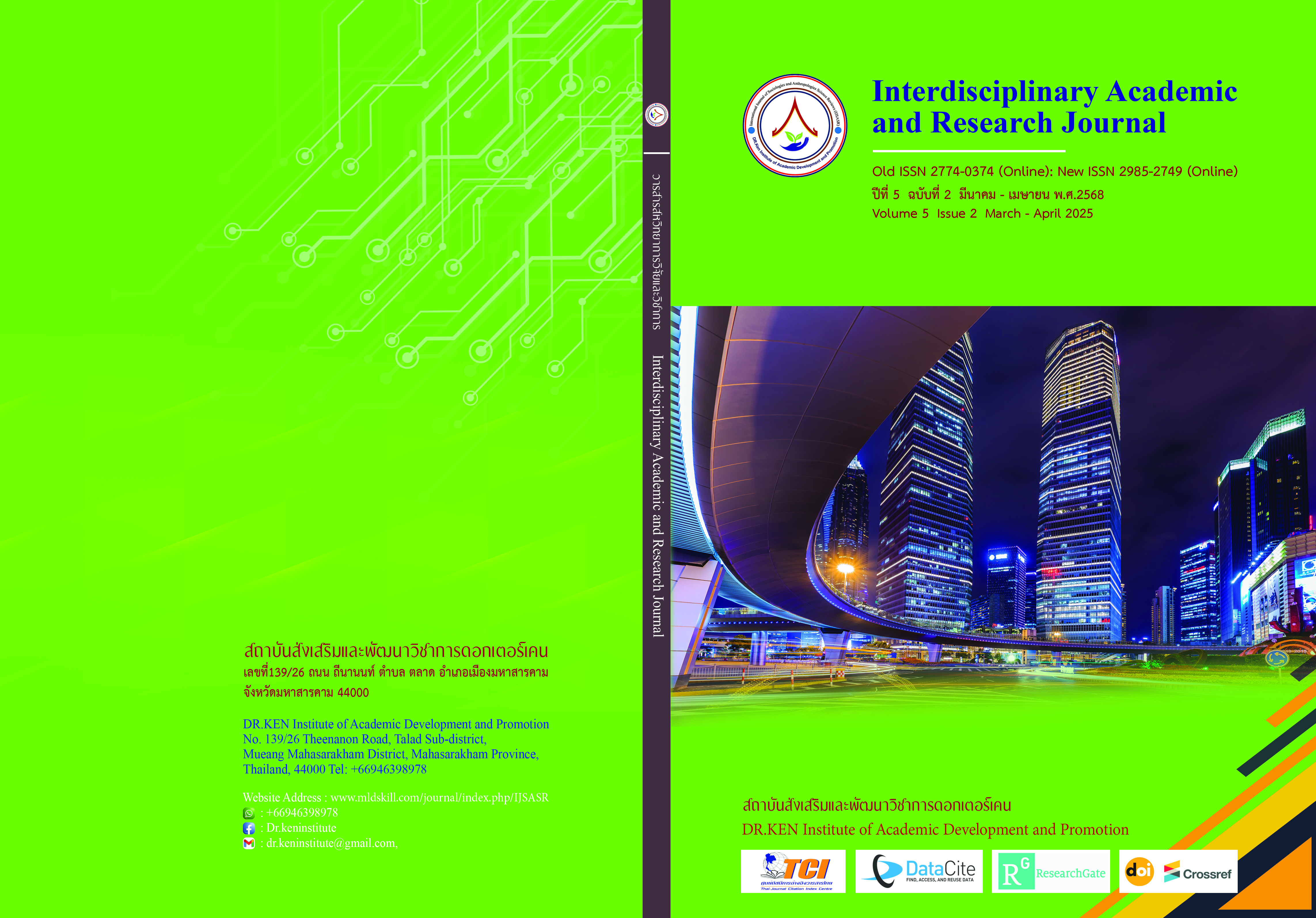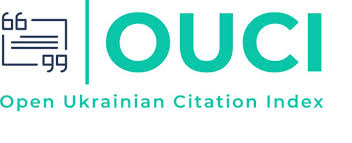The Development of a Literature-Based Learning Management Model with Collaborative Learning Management to Develop Academic Achievement in Thai Literature and Teamwork Skills of High School Students
DOI:
https://doi.org/10.60027/iarj.2025.282273Keywords:
Literature-based Learning Model Combined with Cooperative Learning, Thai Literature Academic Achievement, Teamwork SkillsAbstract
Background and Objectives: Literature holds significant value due to the deliberate choices of words that allow readers to connect with the emotions, thoughts, and ideas the poet aims to convey through the letters. Therefore, the teaching of Thai literature should engage students, making them enjoy and actively participate in exploring literary texts that express creativity through language. This research aims to 1) develop a learning management model that integrates a Literature-Based learning management model and collaborative learning management to enhance high school students' achievement in Thai literature and teamwork skills. 2) Study the effectiveness of the Literature-Based learning management model with collaborative learning management to enhance high school students' achievement in Thai literature and teamwork skills. 2.1) Compare high school students' learning achievement in Thai literature before and after using the developed model. 2.2) evaluate the teamwork skills of students who studied using the literature-based cooperative learning model.
Methodology: The sample group for this research was 40 Grade 10 students of a University Demonstration School who enrolled Basic Thai Language 8 course in the first semester of the academic year 2024. The students were selected through simple random sampling. The research instruments consisted of the Literature-Based Learning Management Model with Collaborative Learning Management, a learning management model manual, learning management plans, a Thai literature achievement test, and a teamwork skill test. The statistics used for data analysis were mean (M), standard deviation (S.D.), t-test dependent, and content analysis.
Results of the research: (1) Results of the Literature-Based Learning Management Model with Collaborative Learning Management to Develop Academic Achievement in Thai Literature and Teamwork Skills of High School Students comprises of 5 components of the model: 1) Principles, 2) Objectives, 3) Learning process which includes 6 steps: 3.1 G: Guidelines and Collaboration in Selecting Literature 3.2 Stimulate Reflection and Connect Experiences 3.3 Defining Issues and Collaboratively Planning the Reading 3.4 Reading Literature Together 3.5 Interactive Activities for Learning and Exchange 3.6 Presentation, Reflection, and Evaluation, 4) Measurement and Evaluation, 5) Supporting Factors for Model Implementation, (2) The effectiveness of the Literature-Based Learning Management Model with Collaborative Learning Management To Develop Academic Achievement in Thai Literature and Teamwork Skills of High School Students is summarized as follows. 1) After applying the literature-based learning model combined with cooperative learning, the average academic achievement scores in Thai literature of the sample group significantly improved at the .05 level, confirming the research hypothesis in item 1., 2) The average teamwork skills score of the sample group after the experiment was found to be high, supporting the research hypothesis in item 2.
References
กระทรวงศึกษาธิการ. (2560). หลักสูตรแกนกลางการศึกษาขั้นพื้นฐาน พ.ศ. 2551 (ฉบับปรับปรุง 2560). กรุงเทพมหานคร: ชุมชนสหกรณ์เกษตรแห่งประเทศไทย.
ชลธิชา หอมฟุ้ง. (2558). การพัฒนารูปแบบการสอนวรรณคดีไทยโดยประยุกต์ใช้จริยสื่อเพื่อส่งเสริมความสามารถด้านการอ่านอย่างมีวิจารณญาณและการแก้ปัญหาเชิงสร้างสรรค์ของนักศึกษาระดับปริญญาบัณฑิต. วารสารวิชาการ Veridian E-Journal, Silpakorn University ฉบับภาษาไทย สาขามนุษยศาสตร์ สังคมศาสตร์ และศิลปะ, 8(2), 1313-1326.
ทิศนา แขมมณี. (2560). ศาสตร์การสอน:องค์ความรู้เพื่อการจัดกระบวนการเรียนรู้ที่มีประสิทธิภาพ. กรุงเทพฯ : จุฬาลงกรณ์มหาวิทยาลัย.
นฤมล เนียมหอม. (2556). การจัดประสบการณ์การเรียนรู้ที่เหมาะสมสำหรับเด็กปฐมวัย. นนทบุรี : มหาวิทยาลัยสุโขทัยธรราธิราช.
นัทธ์ชนัน แก้วดวงใจ และ วิภาวี ศิริลักษณ์. (2567). การส่งเสริมความสามารถในการอ่านอย่างมีวิจารณญาณของนักเรียนชั้นมัธยมศึกษาปีที่ 3 ด้วยกิจกรรมการเรียนรู้โดยใช้วรรณกรรมท้องถิ่นเป็นฐาน ร่วมกับกลวิธี SQP2RS. วิทยาลัยการศึกษา มหาวิทยาลัยพะเยา, 4(3), 911-928.
เนาวนิตย์ สงคราม. (2550). การพัฒนารูปแบบการสร้างความรู้ด้วยการเรียนรู้จากการปฏิบัติและการเรียนรู้ร่วมกันสำหรับบุคลากรในสถาบันอุดมศึกษากรณีศึกษาคณะครุศาสตร์จุฬาฯ. วิทยานิพนธ์ครุศาสตรดุษฎีบัณฑิต: จุฬาลงกรณ์มหาวิทยาลัย.
ศรัณย์ ขนอม และสง่า วงค์ไชย. (2564). ผลการจัดกิจกรรมการเรียนรู้ตามแนวคิดวรรณกรรมเป็นฐานที่มีต่อผลสัมฤทธิ์ทางการเรียนวรรณคดีไทยของนักเรียนชั้นมัธยมศึกษาปีที่ 3. The New Viridian Journal of Arts, Humanities and Social Sciences, 1(1), 20-32. (ISSN: 2773-8787).
สง่า วงค์ไชย. (2560). “การพัฒนารูปแบบการเรียนการสอนโดยบูรณาการแนวการสอนที่เน้นภาษา วรรณกรรม และประสบการณ์เพื่อส่งเสริมความสามารถในการอ่านเพื่อความเข้าใจและการเขียนสรุปความของนักศึกษาระดับปริญญาบัณฑิต”. วิทยานิพนธ์ปริญญาปรัชญาดุษฎีบัณฑิต สาขาหลักสูตรและการสอนคณะศึกษาศาสตร์ มหาวิยาลัยศิลปากร.
สุจริต เพียรชอบ. (2539). ศิลปะการใช้ภาษา. กรงเทพฯ: คุรุสภาลาดพร้าว.
สุพิน ดิษฐกุล. (2543). การเรียนรู้ร่วมกัน (Collaborative learning). วารสารศึกษาศาสตร์ปริทัศน์. 15 (2), 1-8.
อรอนงค์ โฆษิตพิทัฒน์. (2560). การพัฒนาความสามารถในการทำงานเป็นทีมด้วยรูปแบบการสอนแบบร่วมมือทำงานเป็นทีมในรายวิชาสัมมนาวารสารศาสตร์. วิทยานิพนธ์ครุศาสตรมหาบัณฑิต.มหาวิทยาลัยราชภัฏพระนคร.
อิสริยาภรณ์ พึ่งจิตร. (2566). การจัดการเรียนรู้โดยใช้วรรณคดีเป็นฐานร่วมกับกลวิธี REAP เพื่อส่งเสริมความสามารถในการคิดวิเคราะห์ ของนักเรียนชั้นมัธยมศึกษาปีที่5. วารสารศึกษาศาสตร์ มหาวิทยาลัยบูรพา, 34(2), 83-98.
Creswell, J.W., & Plano Clark, V.L. (2011). Designing and Conducting Mixed Methods Research. 2nd Edition, Sage Publications, Los Angeles.
Dick, W., Carey, L., & Carey, J. O. (2005). The systematic design of instruction. Pearson, Allyn and Bacon.
Dickinson, T. L., & McIntyre, R. M. (1997). A conceptual framework for teamwork measurement. In M. T.
Galda, L., Cullinan, B., & Strickland, D. (1993). Language, literacy, and the child. Ft. Worth, TX: Harcourt, Brace Jovanovich.
Gerlach, J.M. (1994). Is this collaboration? In Bosworth, K. & Hamilton, S. J. (Eds.), Collaborative Learning: Underlying Processes and Effective Techniques, New.
Johnson, D. W., & Johnson, R. T. (2003). Student motivation in co-operative groups: Social interdependence theory. In R. M. Gillies & A. F. Ashman (Eds.), Co-operative learning: The social and intellectual outcomes of learning in groups (pp. 136–176). Routledge.
Joyce, B., Weil, M., & Calhoun, E. (2004). Models of Teaching (7th ed.). Boston: Allyn and Bacon.
Joyce, B., Weil, M., and Calhoun, E. (2009). Models of Teaching. 8th ed. New York: Allyn& Bacon.
Kruse, K. (2008). Instructional design. Retrieved March 14, 2008, from http://www. cognitivedesignsolutions.com/Instruction/LearningTheory.htm.
Nolan, P. R. (1989). Designing Screen Icons: Ranking and Matching Studies. Proceedings of the Human Factors Society Annual Meeting, 33(5), 380-384. https://doi.org/10.1177/154193128903300532
Reid, J., Forrestal, P., & Cook, J. (1989). Small group learning in the classroom. Portsmouth, NH: Heineman.
Ruddell, R.B., & Ruddell, M. R. (1995). Teaching children to read and write: Becoming an influential teacher. United States America: Allyn and Bacon.
Downloads
Published
How to Cite
Issue
Section
License
Copyright (c) 2025 Interdisciplinary Academic and Research Journal

This work is licensed under a Creative Commons Attribution-NonCommercial-NoDerivatives 4.0 International License.
Copyright on any article in the Interdisciplinary Academic and Research Journal is retained by the author(s) under the under the Creative Commons Attribution-NonCommercial-NoDerivatives 4.0 International License. Permission to use text, content, images, etc. of publication. Any user to read, download, copy, distribute, print, search, or link to the full texts of articles, crawl them for indexing, pass them as data to software, or use them for any other lawful purpose. But do not use it for commercial use or with the intent to benefit any business.
















.png)


